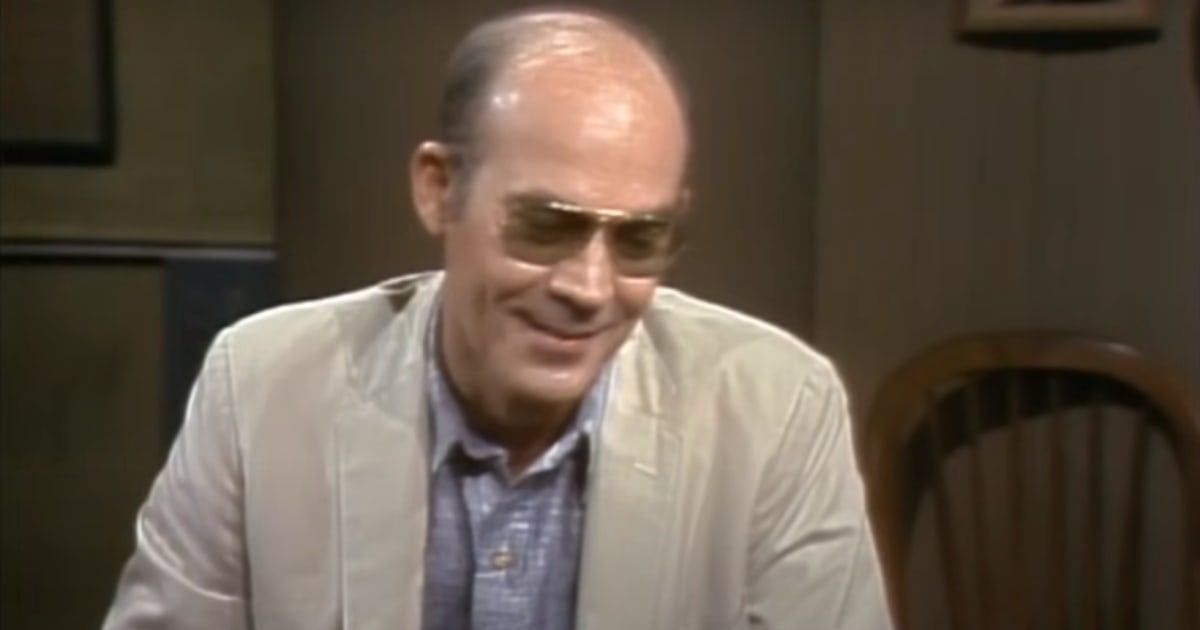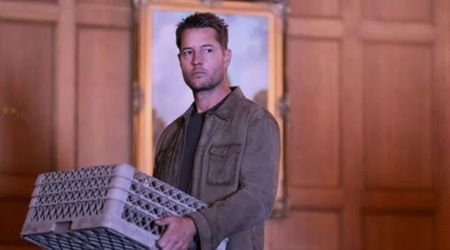‘The Girls on the Bus’: Inside the controversial final years of Hunter S Thompson who set the stage for Gonzo journalism

Warning: Graphic content, readers’ discretion. If you or someone you know is considering suicide, please contact the National Suicide Hotline at 1-800-273-TALK (8255).
LOS ANGELES, CALIFORNIA: Max's much-hyped political drama series, ‘The Girls on the Bus’, has been causing quite a stir. Centered around the lives of four formidable female journalists, the show takes inspiration from a chapter in Amy Chozick's memoir, ‘Chasing Hillary’.
But the burning question remains: does ‘The Girls on the Bus’ directly reference real-life characters? Regrettably, the answer is no. Only one character in the show seemingly draws inspiration from a real-life journalist.
Hunter Stockton Thompson, an American journalist and author, rose to prominence with the release of 'Hell's Angels' (1967). This seminal work documented his year spent among the Hells Angels motorcycle club, offering a vivid firsthand glimpse into their lifestyles and adventures.
According to reports, Thompson was on a bus full of journalists covering the 1968 New Hampshire primary, which seems to be the plot of ‘The Girls on the Bus’.
However, Thompson was found dead at Owl Farm, his fortified retreat in Woody Creek, Colorado, on February 20, 2005.
Inside Hunter Stockton Thompson's journalism stint

After leaving the Air Force in 1958, Thompson worked as a sports editor in Pennsylvania before moving to New York City. He briefly attended Columbia University and worked for Time as a copyboy. In 1959, he was reportedly fired for insubordination, as per Rolling Stone.
Later that year, he worked for The Middletown Daily Record but was reportedly dismissed for damaging property and arguing with a local restaurant owner, as per the outlet.
In 1960, Thompson moved to San Juan, Puerto Rico, where he briefly worked for El Sportivo magazine before it shut down. He then worked as a freelance journalist, contributing to papers like the New York Herald Tribune.
He returned to the mainland US in 1961, living in Big Sur before becoming a correspondent for the National Observer in South America in 1962.
In 1964, he attended the GOP Convention in San Francisco but later quit the National Observer after an alleged disagreement with his editor. He then absorbed himself in the emerging drug and hippie culture, writing for underground papers like Spider.
What is Gonzo journalism? How Hunter Stockton Thompson's work inspired new term
In 1970, Thompson wrote 'The Kentucky Derby Is Decadent and Depraved' for Scanlan's Monthly, marking the beginning of Gonzo journalism, as per the outlet.
Joined by illustrator Ralph Steadman, Thompson's piece focused more on the event's wild atmosphere than the actual race, entangled with the political chaos at the time.
Thompson's work set the stage for Gonzo, a term coined by journalist Bill Cardoso. Impressed by the piece, Cardoso hailed it as "pure Gonzo," a label Thompson proudly embraced.
This style, marked by subjective first-person narratives, became Thompson's hallmark, showcased prominently in his seminal work, 'Fear and Loathing in Las Vegas'.
When Hunter Stockton Thompson reported on Edmund Muskie's alleged drug addiction

In 1971, Rolling Stone assigned Thompson to cover the 1972 US presidential election, seeking to engage its young readership following the passage of the 26th Amendment.
Thompson's task was monumental: to capture the spirit of the campaign trail, its players, and the chaos surrounding them.
Thompson's coverage, later compiled into the acclaimed 'Fear and Loathing on the Campaign Trail '72', focused primarily on Democratic contenders, notably George McGovern and Edmund Muskie.
However, what set Thompson's reporting apart wasn't just the facts he presented, but how he presented them—a blend of "gonzo" journalism and literary flair.
During the year, Thompson's reports offered a distinct view of the election process. He didn't just describe events; he drew readers into the frenzy and drama of the campaign trail. One standout moment he wrote about was a prank on Muskie's campaign train, highlighting the often absurd nature of politics.
Additionally, Thompson reported on rumors (that he had created) surrounding Muskie's alleged drug addiction, a scandal that sent shockwaves and cast a shadow over Muskie's candidacy. While some criticized Thompson's unconventional approach, others praised its raw honesty, as per RogerEbert.com
In the end, Thompson's coverage broke new ground in political journalism, offering readers a glimpse of the American electoral process.
How did Hunter Stockton Thompson's journalism career decline?
After he covered the Rumble in the Jungle, a sporting event between George Foreman and Muhammad Ali in 1974, Thompson's journalistic career took a hit. He missed the match due to intoxication and failed to submit a story. Cocaine use in 1973 worsened his productivity, as per source.
In 1975, he was assigned to cover the end of the Vietnam War but struggled. Thompson then fled the country and only submitted his report a decade later. On the other hand, plans for covering the 1976 presidential campaign fell through.
From the late 1970s, Thompson's output declined. He became reportedly reclusive, rejecting projects. Despite this, he remained on Rolling Stone's masthead.
In 1980, Thompson divorced his wife Sandra Conklin marking a tumultuous period in life. Unable to face the pain, he reportedly relocated to Hawaii to write but faced disappointment.
However, Thompson's career only fell further down the abyss after this point.
Hunter Stockton Thompson once faced sexual assault charge
In March 1990, Thompson faced a sexual assault charge filed by Gail Palmer, a former pornographic film director. Palmer claimed that Thompson threw a drink at her and "twisted her left breast" after she refused his sexual advances, as per the Los Angeles Times.
Thompson faced five felony charges and three misdemeanors due to the assault accusation and allegations of drug abuse following a police raid on his home.
However, the charges were dropped two months later.
How did Hunter Stockton Thompson die?
On February 20, 2005, at 5.42 pm, Thompson died from a self-inflicted gunshot wound to the head at his residence in Woody Creek, Colorado. His family was present, with his wife Anita on the phone with him as the incident occurred, as per the Smoking Gun.
Mistaking the sound of the gun for typing, Anita hung up. Thompson's son Juan discovered his body and later called the authorities. Thompson's struggle with depression, exacerbated by years of alcohol and cocaine abuse, was evident, according to the outlet.
He reportedly also left behind a note titled 'Football Season Is Over', expressing his feelings of age, boredom, and dissatisfaction with life.
While it's not aware to what extent 'The Girls on the Bus' portrays Thompson's life, we do know that PJ Sosko's character in the show is fairly inspired by the journalist.
Want to know more? Stay tuned to 'The Girls on the Bus'!
'The Girls on the Bus' Episodes 1 and 2 are all set to debut on Max on Thursday, March 14.










